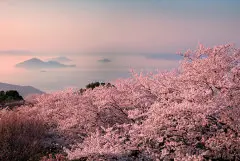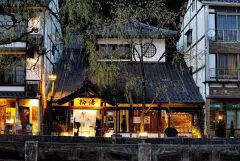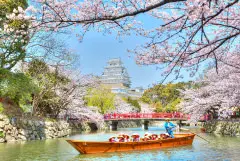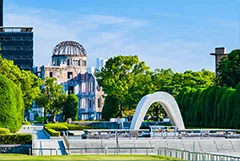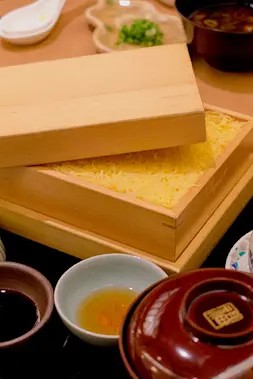Food & Drink
Sawada - Exquisite Kaiseki Cuisine in Matsuyama

-
- DESTINATION NAME
- Ehime
-
- RELATED TAGS
-
- LAST UPDATED
- 16 October, 2019
In an unassuming house in the suburbs of Matsuyama, the restaurant ‘Sawada’ serve some of the finest Japanese cuisine in the city.
From the outside, the restaurant blends into the suburban homes that surround it. But step inside and you’ll find an aesthetically pleasing Japanese interior, with a relaxed dining area and wooden counter. The walled garden running around the building gives you the feeling of being enclosed and separated from the hustle and bustle of the world outside. Perfect surroundings for savoring Sawada’s fabulous cuisine.
The head chef and owner of Sawada is Masataka Sawada. Having studied in Nagoya for 10 years, Masataka returned to his hometown and started the restaurant in 2012. He now runs the establishment with his wife Chiemi.
“This house used to belong to my grandmother and she always said I should turn it into a restaurant,” explains Masataka. “She was very cultured and appreciated Japanese calligraphy and tea ceremony. She had refined tastes.”
Masataka converted the house into a restaurant with the utmost care. In a testament to his grandmother’s heightened aesthetic awareness, most of the dining area and gardens remain unchanged. Sawada is a space that has both the beauty of a traditional Japanese restaurant or teahouse, while maintaining the warm, comforting atmosphere of home.
According to Masataka, the first few months after opening in 2012 were quiet. But good news spreads fast. Even in this location away from the bustling center of Matsuyama, he has had a constant flow of repeat customers who quickly recognized the quality of the fare on offer.
We sat for the lunch course. It was an extremely reasonable set menu for 2,810 yen with six delicious and ornate dishes - all made with seasonal and local ingredients.
“I try to source my ingredients from the Seto Inland Sea and Ehime,” says Masataka. “The fish comes from the day’s catch and some of the other ingredients I prepare the day before.”
The first course to arrive was the muko-zuke. This delicate arrangement included a deliciously-flavored oyster, cod roe and a scallop. The freshness of the ingredients hit me as soon as I took my first bite.
Next to arrive was an elegant covered red-lacquer bowl. This was the owan-mori. Inside was a steamed Spanish mackerel floating in a delicate broth.
The otsukuri, or sashimi course had some of the most delicious slices of raw fish I had ever tasted. No doubt enhanced by the fact the fish were swimming the oceans the day before.
The yaki-mono, came with a broiled tilefish, bamboo shoots, taro, spinach and a mild pepper - all expertly arranged on the plate like a work of art.
Next came the rice, miso soup and pickles. According to Masataka, the color of the soup changes with the seasons reflecting the shift in the color of the miso. Red miso in summer is followed by white miso in winter.
The final course was a frothy matcha green tea, served with a yokan bean jelly. The tea came in a traditional Japanese tea ceremony bowl.
Later, as Masataka described the dishes one by one, I realized every ingredient of every dish however small had a role to play. Masataka was a chef of the highest calibre. He was a conductor, arranging his cooking in a symphony of subtle flavors and tones. He was an artist, adding his own color to each dish, while drawing out the natural flavors of every ingredient.
This is the place to come if you want to sample an authentic example of Japanese cuisine at its zenith. Some popular (and expensive) traditional restaurants in Japan sometimes buy in elements of their dishes readymade. Not in Sawada.
“We don’t buy in any aspect of our dishes ready-prepared,” says Masataka. “Everything we serve has been made by us from scratch - either on the day or the day before depending on the preparation method.”
The location becomes irrelevant once the cuisine on offer reaches these heights. For such a reasonable price, the 15-minute taxi ride from the center of Matsuyama is immaterial.
I wish I had listened to Masataka’s explanations of the dishes before we ate to appreciate each dish that little bit more. Needless to say, I came away from the experience with a deeper appreciation for the subtle nuances and high-skill involved with preparing traditional Japanese cuisine. This is a restaurant I’ll be sure to come back to very soon.
Photographs & Text by Tom Miyagawa Coulton
RELATED DESTINATION
Ehime
The Ehime area has the Nishiseto Expressway, one of Japan’s leading cycling roads, and the area draws attention from cyclists around the world. Ehime contains many places where visitors can encounter history, including Dogo Onsen, a hot spring with a history stretching back some 3,000 years, and the streetscapes of Uchiko, which still look like they did the Edo and Meiji periods.










